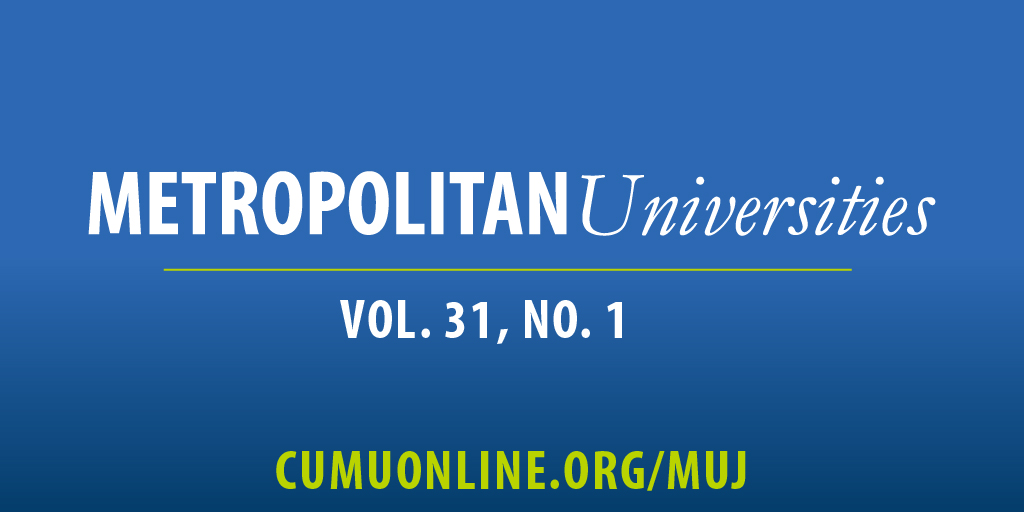Do Well And Do Good: Impact Investing For Endowments
DOI:
https://doi.org/10.18060/23237Keywords:
Values, Capacity Building, Community Engagement, BelongingAbstract
As the calls for responsible investing grow, universities will be asked about their endowments’ investment policies regarding impact investing, wherein endowments seek opportunities that provide investment returns and social impact. A common concern for the investment committees, however, is how to incorporate impact investments without compromising the goal of maximizing asset values and the benefit to its university. This paper offers a way forward. Using standard portfolio optimization models and a broader way to consider return, this paper suggests that an endowment can still meet the goal of maximizing expected value while investing with a purpose. It also offers examples of how to incorporate impact investing opportunities throughout the traditional asset classes in an endowment’s portfolio. The paper also addresses some reasons why endowments have been hesitant to incorporate impact investments. While other papers have addressed aspects of impact investing, this paper seeks to offer an accessible and holistic approach to the topic.
References
References
Aggarwala, R. T., & Frasch, C. A. (2017). The philanthropy as one big impact investment: A framework for evaluating a foundation's blended performance. The Foundation Review, 9(2), 119. doi:10.9707/1944-5660.1370
Banke-Thomas, A. O., Madaj, B., Charles, A., & Broek, N. V. (2015). Social Return on Investment (SROI) methodology to account for value for money of public health interventions: A systematic review. BMC Public Health, 15(1). doi:10.1186/s12889-015-1935-7
Bradford, H. (2018). More fund execs look at ESG investing as a logical extension of their mission. Pensions & Investments, 46(23), 18.
Bugg-Levine, A., & Emerson, J. (2011). Impact investing: Transforming how we make money while making a difference. San Francisco, CA: Jossey-Bass A Wiley Imprint.
Chowdhry, B., Davies, S. W., & Waters, B. (2019). Investing for Impact. The Review of Financial Studies, 32(3), 864-904. doi:10.1093/rfs/hhy068
Community Foundation Field Guide to Impact Investing. (2013). Mission Investors Exchange.
Core, J. E., & Donaldson, T. (2010). An Economic and Ethical Approach to Charity and to Charity Endowments. Review of Social Economy, 68(3), 261-284. doi:10.1080/00346760903480517
Dawkins, C. E. (2018). Elevating the Role of Divestment in Socially Responsible Investing. Journal of Business Ethics, 153(2), 465-478. doi:10.1007/s10551-016-3356-7
Dubb, S., McKinley, S., & Howard, T. (2013). The Anchor Dashboard: Aligning Institutional Practice To Meet Low-Income Community Needs. Takoma Park, MD: The Democracy Collaborative.
Emerson. (2018). The purpose of capital: Elements of impact, financial flows, and natural being. San Francisco, CA, CA: Blended Value Group Press.
Epstein J., & Yuthas, K. (2014). Measuring and improving social impacts: A guide for nonprofits, companies, and impact investors. San Francisco (Calif.), CA: Berrett-Koehler.
Foundations Survey 2016 [Pamphlet]. (2016). Council on Foundations-Commonfund Study of Responsible Investing.
Global Impact Investing Network. (2018). Annual Impact Investor Survey
Global Impact Investing Network. (2019). IRIS + core Metric Sets. New York, NY
Gunther, M. (2019, January). Hewlett Foundation's Leader Makes a Case Against Impact Investing. Chronicle of Philanthropy, 31(3).
Höchstädter, A. K., & Scheck, B. (2015). What's in a Name: An Analysis of Impact Investing Understandings by Academics and Practitioners. Journal of Business Ethics, 132(2), 449-475. doi:10.1007/s10551-014-2327-0
Jaeger, R. A., Rausch, M. A., & Foley, M. (2010). Multi-Horizon Investing: A New Paradigm for Endowments and Other Long-Term Investors. The Journal of Wealth Management, 13(1), 32-42. doi:10.3905/JWM.2010.13.1.032
Kebea, J. J. (february 2019). Developing The Student Anchor Engagement Framework. Metropolitan Universities, 30(1). doi:10.18060/22408
Millar, R., & Hall, K. (2013). Social Return on Investment (SROI) and Performance Measurement. Public Management Review, 15(6), 923-941. doi:10.1080/14719037.2012.698857
Mufson, S. (2019, July 3). Harvard says fighting climate change is a top priority. But is hasn't divested from fossil fuels. The Washington Post.
Phillips, S. D., & Johnson, B. (2019). Inching to impact: The demand side of social impact investing. Journal of Business Ethics. doi:10.1007/s10551-019-04241-5
Principles For Responsible Investing. (2019). PRI Association.
Scotti, M. (2012). Delegated portfolio management with career concerns. Journal of Economic Behavior and Organization, 84(3), 829-839. doi:10.1016/j.jebo.2012.10.001
Sladek, E. (2019). The Transformative Power of Anchor Institutions. Metropolitan Universities, 30(1). doi:10.18060/22919
Smith, J. K., & Smith, R. L. (2016). Socially Responsible Investing by Universities and Colleges. Financial Management, 45(4), 877-922. doi:10.1111/fima.12125
University of Michigan. (2017). Investment Office Incentive Plan. Ann Arbor, MI: Author.
Verheyden, T., Eccles, R. G., & Feiner, A. (2016). ESG for All? The Impact of ESG Screening on Return, Risk, and Diversification. Journal of Applied Corporate Finance, 28(2), 47-55. doi:10.1111/jacf.12174
Walker, D. (2017, April 5). Unleashing the power of endowments: The next great challenge for philanthropy [Web log post]. Retrieved from https://www.fordfoundation.org/ideas/equals-change-blog/posts/unleashing-the-power-of-endowments-the-next-great-challenge-for-philanthropy/
Wood, D., & Hoff, B. (2008). Handbook on Responsible Investment Across Asset Classes. Institute For Responsible Investment.
Yates, B. T., & Marra, M. (2017). Social Return On Investment (SROI): Problems, solutions … and is SROI a good investment? Evaluation and Program Planning, 64, 136-144. doi:10.1016/j.evalprogplan.2016.11.009



